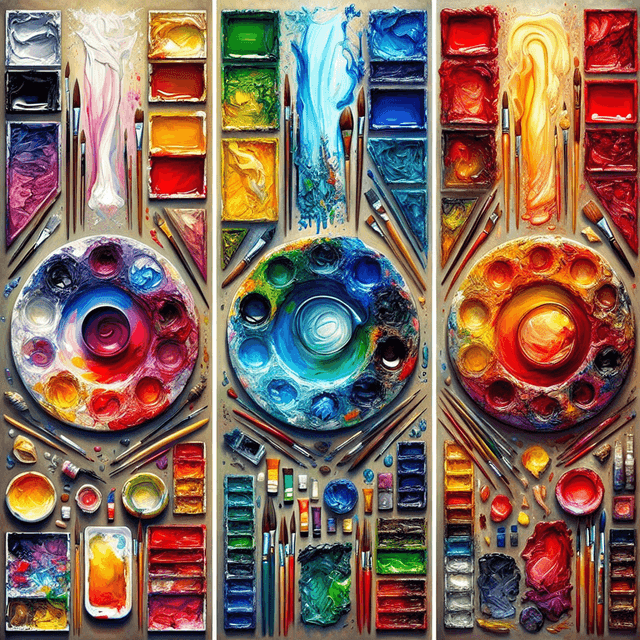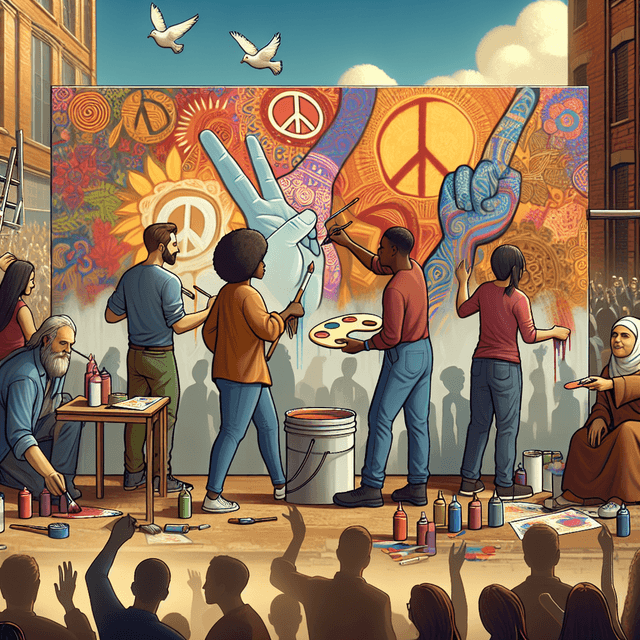Art's Impact on Personal Development and Growth
TL;DRArt plays a significant role in personal development by offering psychological benefits, aiding in emotional expression, enhancing cognitive development, contributing to self-identity formation, fostering social connections, promoting mindfulness, and serving therapeutic purposes. Engaging with art can lead to a richer, more introspective personal life and can be a vital component in education.

Table of Contents
The Happiness Effect
Creating or viewing art can lead to a state of flow, a psychological concept where individuals become fully immersed in an activity to the point of losing track of time and external pressures. This state is associated with heightened creativity, productivity, and happiness.
Stress Reduction
Art can act as a form of escapism, allowing individuals to take a break from the stresses of daily life. The act of focusing on an artistic endeavor can help to calm the mind and reduce the levels of cortisol, the stress hormone, in the body.
Understanding and Empathy
Art often reflects the human condition, offering insights into different perspectives and experiences. By engaging with art, individuals can develop a greater understanding of others, fostering empathy and compassion.
Art as a Tool for Emotional Expression
Art provides a unique avenue for expressing complex emotions that might be difficult to articulate through words alone. It can serve as a voice for the voiceless, offering a platform for individuals to explore and communicate their innermost feelings.
Emotional Release
Creating art allows for the release of emotions, serving as a safe outlet for feelings such as joy, sadness, anger, or fear. This process can be cathartic, helping individuals to process and make sense of their emotions.
Non-Verbal Communication
Art transcends language barriers, enabling people to communicate emotions and ideas non-verbally. This can be especially beneficial for those who struggle with verbal expression or for communicating across different languages and cultures.
Art and Cognitive Development
Engaging with art can stimulate the brain in ways that promote cognitive development. It encourages critical thinking, problem-solving, and the ability to analyze and interpret complex visual information.
Neuroplasticity
Creating and appreciating art can lead to neuroplasticity, the brain's ability to form and reorganize synaptic connections, especially in response to learning or experience. This can enhance mental agility and adaptability.
Visual-Spatial Skills
Artistic activities such as drawing, painting, and sculpting require the use of visual-spatial skills, which are crucial for tasks such as reading maps, understanding diagrams, and navigating through physical space.
The Role of Art in Building Self-Identity
Art can play a pivotal role in the formation of self-identity, allowing individuals to explore and express their sense of self. It can also serve as a reflection of one's cultural heritage and personal experiences.
Self-Exploration
Creating art provides an opportunity for self-exploration, helping individuals to understand their own desires, fears, and values. This process can lead to greater self-awareness and confidence.
Cultural Expression
Art is often a reflection of cultural identity, enabling individuals to connect with their heritage and the broader community. It can be a means of preserving traditions and sharing cultural stories.
Art as a Medium for Social Connection
Art has the ability to bring people together, creating a sense of community and shared experience. It can be a powerful medium for social change, raising awareness about important issues and inspiring collective action.
Community Engagement
Public art projects and community workshops can foster social connections and a sense of belonging. They encourage collaboration and can help to bridge social divides.
Social Commentary
Artists often use their work to comment on social and political issues, sparking conversation and debate. This can lead to increased awareness and a collective desire for change.
Art and Mindfulness
The practice of creating or observing art can be a mindful activity that promotes present-moment awareness. This can have a calming effect, reducing anxiety and promoting mental clarity.
Focus and Attention
Art requires a high level of focus and attention to detail, which can help to train the mind to be present and fully engaged in the moment.
Meditation and Reflection
The contemplative nature of art can be akin to meditation, offering a space for reflection and introspection. This can lead to a deeper understanding of oneself and a more balanced emotional state.
The Therapeutic Power of Art
Art therapy is a recognized form of therapy that uses the creative process of making art to improve a person's physical, mental, and emotional well-being. It can be particularly beneficial for those dealing with trauma, illness, or mental health issues.
Healing and Recovery
Engaging in art therapy can aid in the healing process, providing a non-threatening way to explore difficult emotions and experiences. It can also offer a sense of accomplishment and boost self-esteem.
Coping Mechanism
For many, creating art can be a coping mechanism to deal with life's challenges. It can provide a distraction, reduce anxiety, and offer a sense of control in uncertain situations.
Art in Educational Settings
Incorporating art into education can have numerous benefits for students of all ages. It encourages creative thinking, enhances learning experiences, and can improve academic performance.
Creativity in the Classroom
Art education fosters creativity and innovation, skills that are increasingly valuable in the modern workforce. It encourages students to think outside the box and approach problems in new ways.
Academic Enhancement
Studies have shown that students who participate in the arts are often more engaged in school and perform better academically. Art can help to develop a love for learning and a desire to explore new subjects.
Conclusion
The impact of art on personal development and growth is vast and multifaceted. From enhancing psychological well-being to fostering cognitive development, building self-identity, and promoting social connections, art has the power to transform lives. Whether through creation or appreciation, engaging with art can lead to a more introspective, fulfilled, and connected existence. In a world where personal growth is increasingly sought after, art remains a timeless and universal tool for nurturing the human spirit.



